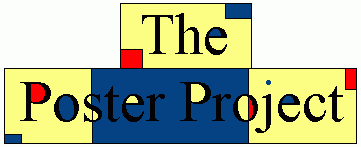
|
|

|
GeometryGeometry is the study of shapes and spaces. Its origins can be traced back to Ancient Greece, and the mathematician Euclid. Euclid wrote a famous book called Elements (check out an online version ) in which he developed Euclidean geometry, the geometry of "regular" space. By regular space, I mean uncurved spaces like the two-dimensional flat plane (think of a piece of paper) or the interior of a box (a three dimensional space). Euclid developed his theorems from some basic postulates (a postulate is a statement which you assume to be true and which you then use to prove theorems. Postulates are also called axioms.) Euclid's postulates were:
Before Euclid could make these postulates, he had to define what he meant by "line" and "point" -- words which have an "obvious" meaning to us. Euclid's reason for writing Elements was to provide a rigorous construction of geometry which replaced intuition with proof. These were some of Euclid's definitions:
Unfortunately, these definitons do not solve the problem; they do not start with nothing, but with different words which have their own connotations. In a very real sense, Euclid treated notions like "line" and "point" as undefined atoms which, using intuition, he combined to make more complicated items. Here are some problems from Euclidean geometry:
Back to the postulates. Euclid did not want to include his fifth postulate as an axiom; he wanted to deduce it from the first four as a theorem. (In general, it is good to have as few postulates as possible. Why?) But, try as he might, he could not. Fast forward through many erroneous "proofs" of the fifth postulate (as being derivable from the first four). In the early nineteenth century, it was discovered by Bolyai, Lobachevsky and Gauss (independently) that the fifth postulate is not necessary (it is in fact independent of the others). This was the beginning of non-Euclidean geometries -- geometries which use Euclid's first four postulates, but not his fifth. In these geometries, the shortest distance between two points no longer has to be a "straight" line. [cool pictures here] Geometry v TopologyWhat is the difference between geometry and topology? Distance, curvature and corners all exist in geometry. None of them exist in topology. While both geometry and topology examine shapes and spaces, you should think of geometry as being much fussier than topology. Topology makes no distinction between two shapes if the one can be made from the other by stretching or twisting. Squares and circles are very different geometric objects, but they are topologically the same.[pictures here]. What you are not allowed to do in topology, is tear. For this reason, topology is sometimes called the study of continuity. Decide if each of the following pairs are geometrically the same or topologically the same. Can something be geometrically the same, but topologically different? How about topologically the same, but geometrically different?
[put some pictures here for people to choose between] Read more about geometry in the Mathematical Atlas. 
|